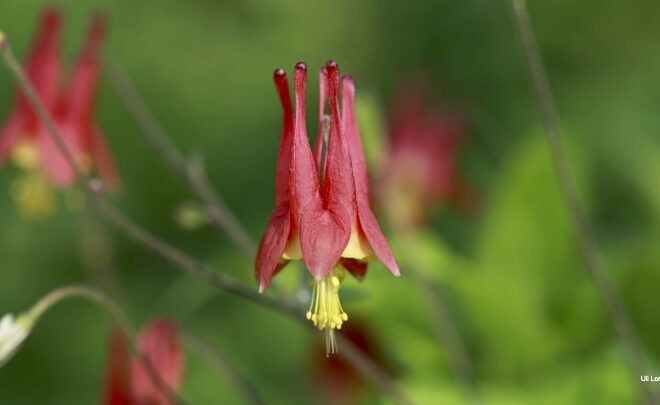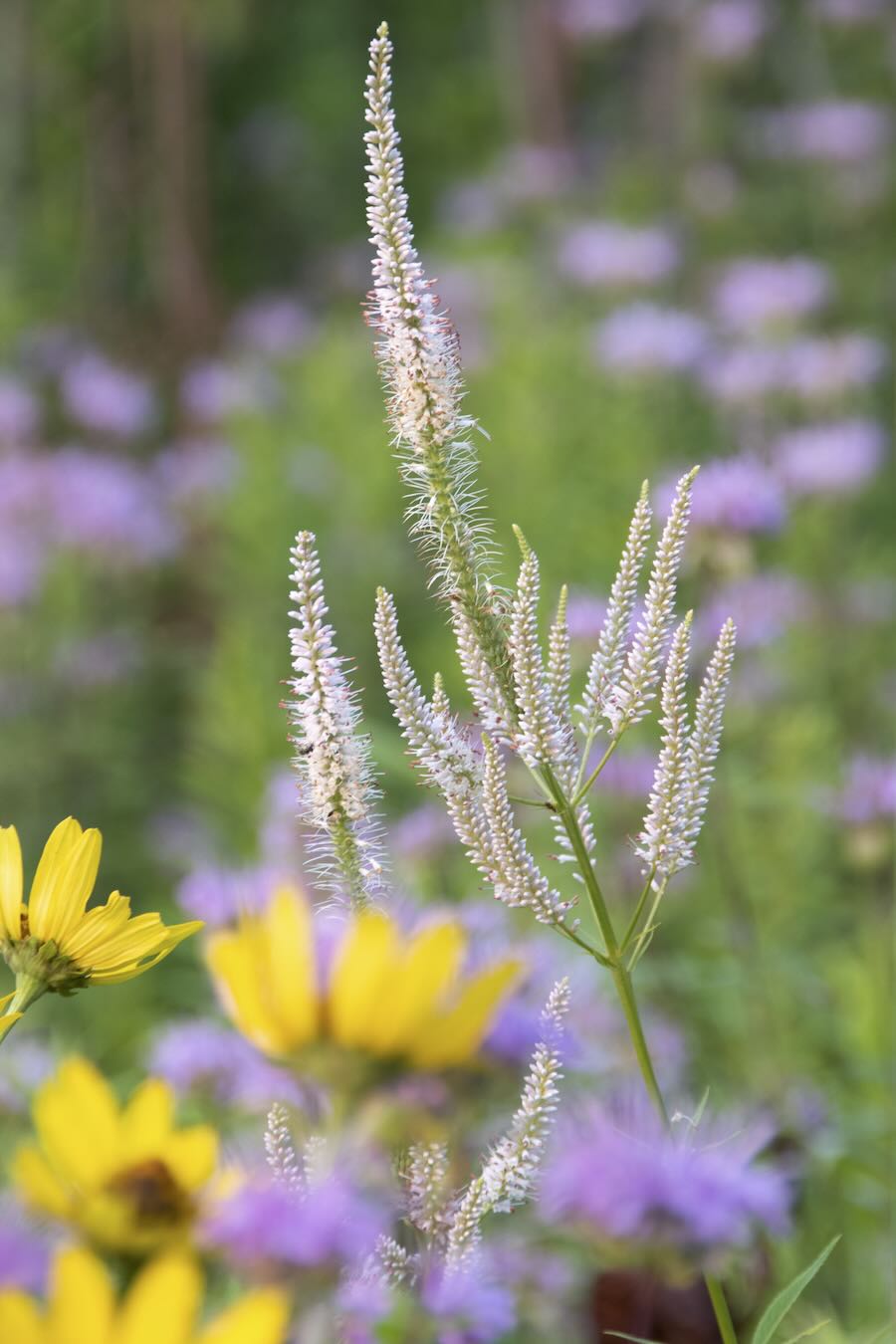
prairie and meadow plantings, succession and further, with neil diboll
[ad_1]

 INTEREST AND AWARENESS spherical native vegetation has been trending in latest instances, and it makes them actually really feel nearly new. Nonetheless in any case natives are the distinctive vegetation of an house, and even in positive specialty corners of the nursery enterprise, they’ve been spherical far longer than they’ve been making headlines.
INTEREST AND AWARENESS spherical native vegetation has been trending in latest instances, and it makes them actually really feel nearly new. Nonetheless in any case natives are the distinctive vegetation of an house, and even in positive specialty corners of the nursery enterprise, they’ve been spherical far longer than they’ve been making headlines.
Merely ask at current’s customer, Neil Diboll, who has operated Prairie Nursery in Wisconsin for 42 years, since prolonged sooner than phrases like “pollinator yard” had been fashionable. He’ll share just a few of his favorite species you won’t know, and likewise some suggestion on what to anticipate over time managing meadow- and prairie-style plantings, in case you’re amongst these gardeners considering transitioning part of your backyard, as an illustration.
Neil has been president and consulting ecologist for Prairie Nursery in Westfield, Wisc., since 1982. Last yr, in collaboration with yard designer and horticulturist Hilary Cox, he revealed “The Gardener’s Info to Prairie Crops” (affiliate hyperlink), a whole data to using prairie vegetation in gardens and greater restorations. (Above, Culver’s root, Veronicastrum virginicum.)
Plus: Comment inside the subject near the underside of the online web page to enter to win a reproduction of the information.
Study alongside as you’re taking heed to the June 3, 2024 model of my public-radio current and podcast using the participant beneath. It’s possible you’ll subscribe to all future editions on Apple Podcasts (iTunes) or Spotify (and browse my archive of podcasts proper right here).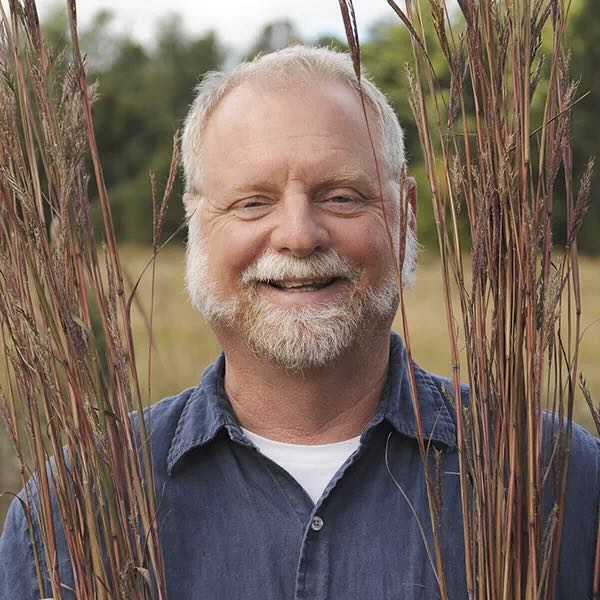

talking prairie vegetation, with neil diboll
Margaret Roach: I just like the information, Neil; it’s so extreme, however as well as accessible. I don’t know when you occur to might be every points on the same time, nonetheless come what may it is. So congratulations on that.
Neil Diboll: Thanks.
Margaret: So we did a present “New York Events” yard column collectively, nonetheless that wasn’t the first time I met you. I met you 30-something years prior to now after I used to be engaged on a information known as “The Pure Habitat Yard” with Ken Druse, and we got here round you and discover out about all points prairie from you. And once more then, natives, you rang a bell in my memory after we labored on the present Events piece, had been further extra prone to be thought-about weeds than fashionable [laughter]. Positive?
Neil: Oh, positive, positive. Let’s merely say we had been just a bit ahead of the curve on this. So there was some pretty laborious years trying to influence people to utilize natives as soon as they weren’t accustomed to determining one thing about them.
Margaret: Yeah, we’ve come a terrific distance, nonetheless it feels come what may to me—I suppose on account of I get quite a few reader and listener questions—it feels to me like inside the mainstream horticulture market, the evaluation and development and promoting and advertising and marketing efforts have been truly to invent flashy new varieties of natives and promote, promote, promote them maybe better than to educate the consumers. And I do know you suppose education is probably going some of the important parts, and I fully agree, listening to what people are confounded by.
Neil: Yeah, education is super-important, significantly when 40 years prior to now we had a product that nobody knew about, and so we wanted to coach. And to make sure that people to utilize your product appropriately, to make use of those vegetation appropriately, it’s important to make certain that they understand them and the way in which they work along with each other.
So gardening with native prairie vegetation, people can create mini-ecosystems or plant communities, and that’s truly a radical concept on account of now you’re not merely plunking in a plant like this or a plant like that, nonetheless you’re actually using a neighborhood ecosystem as your model for a yard. And so reasonably than recreating nature in our private image, when you’ll, we’re using nature’s guidelines to create a model of nature. So reasonably than a homocentric yard, it’s a further of a nature-centric model. And that truly helps to inform gardeners as far as use these vegetation and use them to create low-maintenance, high-quality habitat.
Margaret: And easily to that point that you just simply’re making, I suggest, after we long-time gardeners, even expert, skilled gardeners, we’d buy our hostas and our astilbe and our this and that. I merely talked about some shade vegetation, nonetheless I’d level out photo voltaic vegetation, too. We put them down and 30 years later, they’re mainly within the similar place that they was as soon as [laughter]. You already know what I suggest? We knew deal with them, we knew what they needed. We knew when to cut them once more. We type of knew the routine. That they had been the acquainted palette. And these aren’t primarily.
And as you’re declaring, we’re not merely plunking points down, “Ooh, look, that’ll look pretty over proper right here, and this may occasionally look pretty over there,” we’re creating communities. And that’s a whole fully totally different mindset. So I get quite a few questions from individuals who discover themselves thrown off by, properly, how do I make this all work? It’s just a bit difficult.
Neil: And it helps to know your vegetation, and loads of gardeners know their vegetation phenomenally properly, nonetheless they’re merely fully totally different vegetation. And so what we’re seeing now might be that extreme gardeners are attending to know native vegetation and making use of ecological guidelines in how they design with them, how they deal with them, and so forth.
Significantly previous merely utilizing the vegetation as one factor aesthetic for human beings, nonetheless reasonably as a habitat yard, and what I title a 3 manner partnership with nature, the place we meet nature halfway. So we invite nature into our gardens. And reasonably than spraying all of the issues to keep up the bugs off, we actually invite the bugs. Because of in my yard or my meadows, if I don’t have holes inside the leaves of my vegetation, I’m an utter failure as a gardener on account of I’m not supporting pollinators, I’m not supporting birds. The bugs that sort the inspiration of the meals chain that feed all of the issues up, they’re going to eat my vegetation, and that’s why half the rationale why these vegetation are there, not just for me, nonetheless for all of us.
Margaret: Correct. Perfectionism won’t be the target [laughter]. And a static picture, as I said, I’ve hostas they often’re nonetheless within the similar place the place I put them, as I said, and I may need put them there 30 years prior to now. And mainly, they’re bigger, nonetheless they’re nonetheless there. Nonetheless with let’s say… and maybe we should always at all times inform the excellence between what’s a meadow versus a prairie planting on account of that’s type of scorching now, is to make a meadow or transition some backyard to meadow or to prairie. What is the distinction out of your ecologist’s viewpoint?
Neil: Between meadow and prairie?
Margaret: Yeah.
Neil: Yeah. Often inside the lexicon, a meadow is seen as a further cool-season grass, with grasses that come up early in spring, with quite a few wildflowers that are further predominant inside the Jap part of the US, usually a lower profile. And a prairie is completely the define of the Midwestern tall-grass prairie, which was encountered by early French explorers inside the seventeenth, 18th centuries. They often found these big meadows with these tall grasses, and the phrase they used to clarify them was prairie, which in any case is the French phrase for meadow. Nonetheless everytime you check out the way in which by which the phrases, the phrases are used now, meadow usually refers to a lower-growing profile, wildflower, meadow. And you will have a short prairie, nonetheless a short prairie continues to be 1 to 5 toes tall relying upon the constituents. So it’s nonetheless usually a taller plant neighborhood and typical of the Midwest reasonably than the East.


Margaret: So I hear from people who transitioned an house to a meadow or a prairie, usually, as soon as extra, I’m inside the East, so I hear from significantly quite a few Easterners they often say, meadow, “I’ve a model new meadow yard or irrespective of.” “I’m managing my meadow.” And inside the third yr, I don’t see my black-eyed Susans. There’s no further black-eyed Susans. And I appreciated my black-eyed Susans,” Rudbeckia hirta [above]. Some members of that neighborhood that they thought was going to stay static, maintain like a postcard image with out finish, and it’s evolving, correct? So uh-oh, succession [laughter].
Neil: Exactly, yeah. And let’s check out the two alternative routes it’s best to make the most of these vegetation. It’s possible you’ll create a prairie yard with transplants, the place you probably can select long-lived vegetation if you would like it to be further static. And that’s why in our information, we listed vegetation expectations. We don’t have any annuals in there, nonetheless we now have quite a few biennials, in any case, with a life expectancy of two years. After which short-lived perennials three to five years, after which mid-successional perennials 5 to 10 years, after which later successional perennials 10 to twenty, after which lastly the Methuselah vegetation that keep 20, 30, 40, 50 years and longer.
Margaret: I appreciated that Neil, I appreciated it. I suggest, I’ve in no way seen the life expectancy listed in any information about vegetation. And everytime you did that, and it was like “Baptisia, 20-plus years,” and I was like, correct, that issue is anchored inside the ground. You already know what I suggest? That’s a keeper that’s staying spherical. It settles down, and it’s there.
Neil: Correctly, I imagine that’s truly important for gardeners, so that they know what they’re getting. As you stage out, what occurred to my Rudbeckia hirta? Correctly, it’s a biennial, and naturally you’re referring to a seed mix the place being a biennial, it’s merely pretty dominant in a second yr, and it’d grasp on for another couple of years, nonetheless by the fifth or sixth yr, it’s nearly gone attributable to, as you recognized, ecological succession.
And that’s truly important for people to know ecological succession, whereby everytime you seed onto open ground, usually the first yr it’s all weeds, which you didn’t plant. They’re merely dormant seeds inside the soil, and in addition you administration them by retaining all of the issues mowed once more, usually to about 6 inches inside the first rising season.
After which you have biennials that current up in a second yr, identical to the black-eyed Susan and weedy biennials. And oftentimes you’ll ought to mow these inside the second yr. After which the third yr, the additional rapidly maturing perennials of the prairie flowers and grasses start to current up. And by the fifth yr, it’s nearly a prairie, if all of the issues’s going primarily based on plan.
After which what’s fascinating is the exact number of full number of prairie vegetation usually peaks spherical yr 12 or 15. After which it begins to drop barely as a result of the early successional and mid-successional perennials give possibility to those longer-lived vegetation that keep 10 to 20-plus years.
So it is type of disappointing usually everytime you see just a few of your favorite vegetation maybe going by the wayside. Nonetheless with disturbance… and that’s truly important, and disturbance is on the market in many varieties. There’s ripping the underside up, there’s animal train, nonetheless the one we usually use is managed burning.
With managed burning, you can type of set succession once more and preserve what we title gap-phase succession the place you have open soil the place just a few of those totally different species that will likely be shorter-lived, can recede and proceed to deal with as rather a lot selection as potential. So burning is completely a necessary side of this. In any case, a lot of folks can’t burn or don’t must burn. It’s actually very easy to burn when you occur to rearrange your panorama precisely. And it’s truly quite a few satisfying as you already know.
Margaret: There’s a whole half in your information about it, and after I first met you, you couldn’t wait to convey me and Ken Druse to your own home the place you had been making a prairie. You had a youthful prairie yard in your entrance yard, I imagine, and in addition you wished to point us a managed burn. And so as soon as extra, you instruct do it inside the information.
Correctly, I like that you just simply said that we’d use just a few of those vegetation as type of specimens. Shall we say, “I’m going to make a mattress of these prairie vegetation, not a neighborhood.” So we’d do this and administration it further, nonetheless when it’s further like a meadow or a prairie, the succession goes to take preserve and so forth.
Neil: And everytime you use seeds, it’s going to be an evolutionary course of. Nonetheless in any case, we have to have these early-successional, mid-successional species. So we now have curiosity in yr 3, 5, 7, 10, 15, 20, and on, nonetheless it type of reaches further of a stasis after about 15 years or so. But it surely absolutely’s not unhealthy. You proceed to have quite a few flowers and pleasant grasses, so there’s just some species that can fall by the wayside over an extended timeframe.
Margaret: And likewise you merely said grasses. And that’s a necessary half on account of merely deciding on a whole lot of flowers, quite a few forbs, won’t be going to do it, won’t be going to hold all of it collectively and create that neighborhood, on account of these had been vegetation that are accustomed to having partnerships with grasses.
Neil: Positive. And prairies are grasslands, meadows are grasslands, and so that you truly can’t have one with out the grass, and people who have tried to plant merely wildflowers. And it could be completed, nonetheless it’s just a bit trickier for lots of causes. Main, it is the fibrous roots of the grasses that help to discourage weeds, on account of they do not allow any open soil on the ground of the underside. And so that’s the place most weeds get established. There are always going to be weeds that will blow in and set off points, nonetheless you may enormously in the reduction of that hazard by having enough quantity of grass in your meadow or yard. In order that they’re truly type of your weeders. Like I say, make the vegetation do the provide the outcomes you need. I don’t must go in the marketplace and weed. I’m going to design this yard or design this prairie seed mix so it’s going to have enough grass in it to keep up weeds out as best as potential.
And likewise, when you occur to’re going to burn a prairie, flower sticks, earlier flower sticks don’t burn. You need what we title excellent fuel—grass—with the intention to hold a fire. So when you occur to don’t have grass in your prairie, it principally gained’t burn. And then you definitely definately lose that good administration alternative for retaining it very latest and new and looking out good and retaining out weeds and timber and shrubs, on account of hearth is completely the best option to preserve out invaders, most invaders. And people are scared of fireplace. Correctly, actually on our website online, I’ve an article beneath property and guides, it’s known as “Straightforward strategies to Burn Your Prairie Safely,” and there’s so many tips on how to do this.
So I suggest, it’s nearly not attainable to lose it when you occur to do it correct. And one truly straightforward trick is just sooner than you burn it, merely decrease all of the issues down and all the fuel is on the underside. Instead of getting large flames, it’s merely creeping alongside the underside. And so it’s really easy. It’s very straightforward.
Margaret: I’m sorry that the house wren, by the way in which by which, open air my window—even supposing I’ve closed the window, the house wren is insistent on being on this program at current, so that you probably can hear him screaming.
Neil: Oh, yeah, that’s good. It’s good to have a confederate on the current.
Margaret: [Laughter.] Just a bit bossy creature. Yeah. So we had been talking about making this dwelling mulch in a manner by having the a part of grasses with the wildflowers, the forbs, and that it makes it further weed-resistant. The other question I get requested a lot is when weeds do come by way of, significantly inside the early years that I don’t want, must I pull them out on account of then that can open up one different space inside the soil? Should I pull them out and try to do the least opening of soil potential or put one factor on it, like a little bit of cardboard or irrespective of? Is there any weeding suggestion the least bit for these type of communities?
Neil: Yeah, as quickly as as soon as extra, you’re talking a few seeded meadow, seeded prairie, correct?
Margaret: Presumably, yeah.
Neil: O.Okay. Correctly, when you occur to check out it, it is necessary to check out it strategically, and it’s important to know your weeds. The reality is, after I first started doing this once more in 1977, I was looking at plantings that any person had completed on the school the place I went to highschool, and it was a extremely new planting so all I found had been weeds. So I wanted to check my weeds first, which actually was very useful.
Because of when you occur to check out weeds, you check out them as a result of the species that may set off points in a grassland, you have annuals, which current up largely inside the first yr and the second yr as properly. Then you definitely’ve biennials. Now we’re talking about herbaceous vegetation, annuals and biennials. After which you have perennial grasses, and you have got perennial rhizomatous grasses and perennial non-rhizomatous grasses. Then you definitely’ve perennial broadleaf weeds, and individuals are moreover divided into rhizomatous and non-rhizomatous, with the rhizomatous species being the precise draw back kids, these are people who creep in all places. Points like Canada thistle and self-discipline bindweed and horse nettle. These are precise, precise points, and in addition you’ll want to get them out as rapidly as you presumably can. Crown vetch, oh, what a horrible plant.
Margaret: We have mugwort, and I do know your suggestion for mugwort.
Neil: Oh, mugwort is like, oh, good luck with that.
Margaret: Relocate. Relocate [laughter].
Neil: Yeah, relocate. Recalibrate, positive. It’s so troublesome after you may have a longtime inhabitants of it.
Or what you’ll be able to do is you probably can kill all of it off. After which proper right here’s just a bit trick. If in case you may have a long-term draw back with the seed monetary establishment, you probably can kill all of the issues off with whichever methodology you’ll want to use, whether or not or not it’s smothering or repeated tilling or herbicide or irrespective of, until there’s fully none of that perennial weed left and none throughout the perimeters the place it could creep in. After which you probably can put 3 inches of latest, clear, topsoil over that which may bury the weed seed monetary establishment, after which you probably can seed or plant your vegetation into that latest soil, assuming that it does not have one other problematic weeds. So this works on a small house, it’s not going to work on a much bigger house.
Nonetheless while you’ve a problem website online with a longterm historic previous of really nasty, thuggish weeds, that’s the manner you overcome them, by completely eliminating the weeds after which putting 3 inches of tremendous, clear topsoil over that, that will not have weed seeds. Nonetheless when you occur to check out this, it’s important to know who you’re up in the direction of. So as far as pulling weeds inside the first yr of a seeded prairie, you in no way pull weeds, on account of everytime you pull the weeds, you undoubtedly, invariably convey up clumps of soil and there go your prairie seedlings with it. And likewise you may as properly go in there and spray it with Roundup. That’s why we preserve all of the issues mowed to 6 inches, on account of few, if any of those prairie seedlings are going to develop better than 6 inches inside the first yr.
Throughout the second yr, if we now have draw back weeds with biennials like burdock, sweet clovers, wild parsnip, quite a few these guys can truly be a problem. So correct after they finish blooming, we decrease them proper all the way down to 12 inches, which then stops the seed formation course of.
Margaret: Correct, O.Okay.
Neil: And kills the vegetation aside from Queen Anne’s lace, which is an indeterminate bloomer and would require mounted slicing once more of the flowers. Then inside the third yr…
Margaret: I was going to say strategic counting on what plant you’re up in the direction of, you have a technique. Yeah.
Neil: Exactly. And that knowledge is inside the information, “The Gardener’s Info to Prairie Crops.” It’s moreover on our website online. So there’s quite a few property proper right here the place people can get to know these vegetation and what to do. Nonetheless as soon as extra, it is necessary to know who you’re up in the direction of and know strategically administration them.
Margaret: Correct, understand its life historic previous and so forth. Yeah.
Neil: Yeah, exactly.
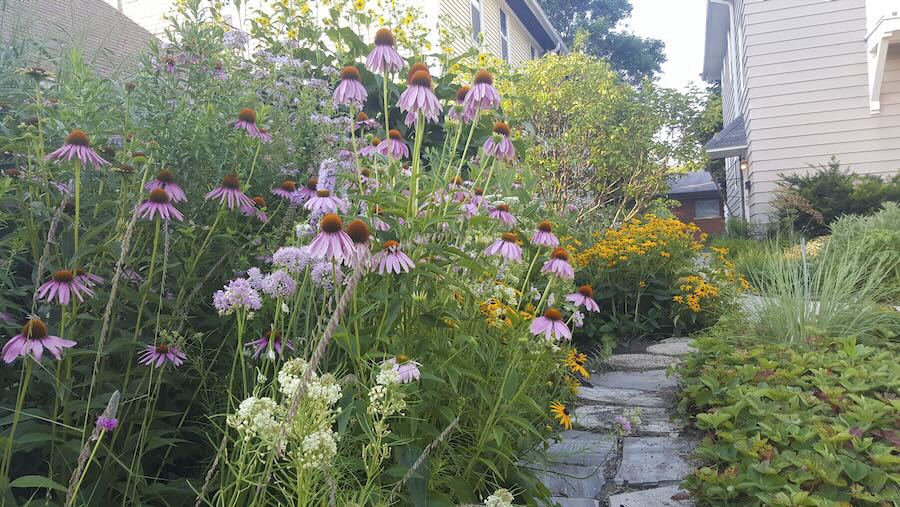
 Margaret: So after we did the Events story, we talked about how even supposing all people almost coast to coast is conscious of purple coneflower, Echinacea purpurea, which by the way in which isn’t native coast to coast, nonetheless I even see it provided in catalogs selling in California, for goodness sake. Nonetheless there’s so many in every single place it seems [laughter]. Nonetheless there’s so many good prairie natives for the Jap half or two-thirds of the nation, which is I suppose roughly speaking, quite a few them are your specialties, that people don’t know however. And I believed it might be satisfying to easily take a few minutes to call out so we don’t run out of time. Take a few minutes to call out some that you just simply need you knew greater, on account of it’s not merely purple coneflower and Rudbeckia, correct? [Above, hybrid coneflowers combining genetics of Echinacea purpurea and E. pallida.]
Margaret: So after we did the Events story, we talked about how even supposing all people almost coast to coast is conscious of purple coneflower, Echinacea purpurea, which by the way in which isn’t native coast to coast, nonetheless I even see it provided in catalogs selling in California, for goodness sake. Nonetheless there’s so many in every single place it seems [laughter]. Nonetheless there’s so many good prairie natives for the Jap half or two-thirds of the nation, which is I suppose roughly speaking, quite a few them are your specialties, that people don’t know however. And I believed it might be satisfying to easily take a few minutes to call out so we don’t run out of time. Take a few minutes to call out some that you just simply need you knew greater, on account of it’s not merely purple coneflower and Rudbeckia, correct? [Above, hybrid coneflowers combining genetics of Echinacea purpurea and E. pallida.]
Neil: Correct. And people are oriented in the direction of the showy flowers. And let’s not overlook that the English had been planting purple coneflower inside the nineteenth century, after we had been plowing up the prairies. So that plant’s been customary for a really very long time, merely not proper right here. Nonetheless let’s check out one other vegetation that possibly are just a bit further muted or are good companions for among the many showier vegetation.
And I truly like quite a few the white-flowered vegetation, and white-flowered vegetation moreover notably good for bees and parasitoid wasps, which help to manage pests in your yard. One in every of my favorites is Culver’s root, Veronicastrum virginicum [top of page]. It’s a stately, elegant plant. It’s about 5 toes tall. It has gorgeous whorled leaves up the stem and these pure white spires of flowers, fully stunning plant, and it will develop in clay. It may develop in moist soil. It doesn’t like dry soil. It may develop in full photo voltaic, and it will develop partly shade. So it’s a fairly versatile plant, as long as you give it a superb yard soil or maybe a barely damp soil.
One different good plant is the rattlesnake grasp, Eryngium yuccifolium [below], enticing foliage, wonderful flowers, which may bloom for a fairly extended timeframe. Solely a truly fascinating, odd-looking plant, nonetheless it has precise character, and it blooms concurrently prairie blazingstar, Liatris pycnostachya. And you have this lavender-white, nice pastel combination.
That’s the place the whites are so nice, and it’s fascinating. People think about prairies, oh, it’s all filled with yellow flowers, nonetheless actually there’s quite a few fully totally different colors. White is the second commonest color of prairie flowers.
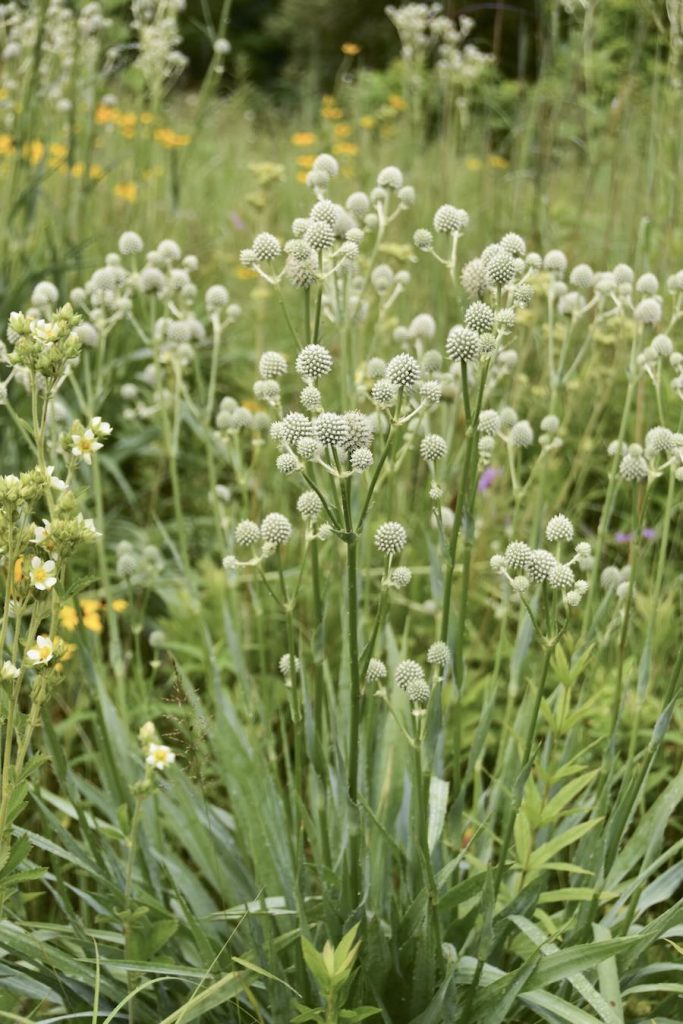
 Margaret: I didn’t know that.
Margaret: I didn’t know that.
Neil: Yeah, it’s excellent. And so rattlesnake grasp can also be pollinated nearly fully by wasps, along with parasitic wasps. And I had a client who had horrible points with tomato hornworm in his vegetable yard. He planted a 1,000-square-foot prairie from us with a quarter-pound of prairie mix. And after the rattlesnake grasp started blooming, he said, “I had no further points with tomato hornworms.”
And there is a parasitic wasp that assaults the tomato hornworm by laying eggs on its once more, which then burrow into the caterpillar, the caterpillar stage, and principally eats it from the inside out and emerges like “Alien.” So the place do you suppose they obtained that idea for the movie? From nature. So he says, “My prairie is my pesticide.” And so quite a few pure gardeners will use these vegetation to attract parasitic wasps to keep up, hopefully, in a lot of cases, to keep up their pests down.
Margaret: And everybody is aware of… That’s one occasion, and by no means merely with parasitic wasps, nonetheless the additional selection, the additional layers of the meals chain are being supported, the additional help there could also be at every diploma for any threat.
Neil: Oh, yeah. So true.
Margaret: Yeah. Meals and interventions every will be discovered.
Neil: So when you occur to plant a prairie mix with 20, 25, 30 species, you promote them, get 100 laptop. Mother nature’s pretty robust. Nonetheless I suggest, when you occur to get 70, 80 p.c of that and in addition you get a big number of flowers, you’re not merely feeding bugs, you’re moreover feeding birds on account of they eat the bugs, and loads of butterflies come. And naturally the bees, the wasps and everybody.
And people are so scared of wasps, nonetheless most wasps, they don’t problem you. The one wasps you even have to worry about are yellow jackets. These are the one ones that may assault you in case you aren’t bothering them. Hornets gained’t problem you. Mud daubers gained’t problem you, cicada killers gained’t problem you besides you problem them. Nonetheless the yellow jacket, they’d merely as rapidly sting as check out you. Nonetheless they usually don’t come to the prairie on account of they eat doughnuts and hamburgers and soda cans.
Margaret: They go to the mall [laughter].
Neil: They go to the picnic.
Margaret: They go to the mall.
Neil: That’s the place they go, they’re not coming to your prairie. So price, one different good selection are the mountain mints, genus Pycnanthemum. These are merely pollinator havens, and we couldn’t give these away 20 years prior to now. Out of the blue, they’re great customary because of the curiosity in pollinators. And so Pycnanthemum is inside the mint family, and it is excellent at what variety of fully totally different species it attracts.
Margaret: And there’s quite a few fully totally different mountain mints, I imagine. I don’t know what variety of you carry.

 Neil: There’s tons. Pycnanthemum virginianum, Pycnanthemum tenuifolium, Pycnanthemum muticum [above]. All of these are literally good alternatives for attracting pollinators, they often’re pretty adaptable species.
Neil: There’s tons. Pycnanthemum virginianum, Pycnanthemum tenuifolium, Pycnanthemum muticum [above]. All of these are literally good alternatives for attracting pollinators, they often’re pretty adaptable species.
Margaret: Considered one of many points that people ask me about a lot, and I imagine we talked about maybe one or two alternatives inside the Events story, people want points that are low to the underside, like groundcover-ish points, on account of that was what, in any case, as gardeners, we had been all hooked on groundcovers, and there’s not as many alternatives maybe, nonetheless there are some. I imagine Antennaria, pussytoes is that one [below]?

 Neil: That’s a perfect plant for a dry, sandy soil. If in case you may have a patio with sand in between the stones, it’ll develop in there. It stays truly low. It likes a minimum of a half a day of photo voltaic, nonetheless it stays very low. It has gorgeous silvery leaves.
Neil: That’s a perfect plant for a dry, sandy soil. If in case you may have a patio with sand in between the stones, it’ll develop in there. It stays truly low. It likes a minimum of a half a day of photo voltaic, nonetheless it stays very low. It has gorgeous silvery leaves.
And it actually is dioecious: It has separate feminine and male vegetation. It’s laborious to tell the excellence besides you get up shut and personal. But it surely absolutely sends up these little flower stalks about 4 inches tall and these gorgeous whitish-green leaves, they often significantly have these little white hairs to duplicate photo voltaic on account of they develop in very dry environments, the place it’s easy to get overheated.
So it’ll develop in super-, super-difficult web sites like sandy hillsides and places like that, or alongside sidewalks, nonetheless it doesn’t like clay. In order that you’ll want to have a really good-draining soil. Nonetheless while you’ve these spots that are precise scorching spots, like up in the direction of the south side of a house that get merely burned up, it’s a good low-growing plant. And there’s one other truly nice dry-tolerant prairie vegetation that attain taller heights as properly for these types of troublesome situations.
Margaret: The ultimate one I must ask you about is there’s a petunia, nonetheless it’s not a petunia. It’s a Ruellia, I imagine.
Neil: Yeah.
Margaret: Yeah. Is it a prairie petunia? Is that what it’s known as? What’s its frequent establish?
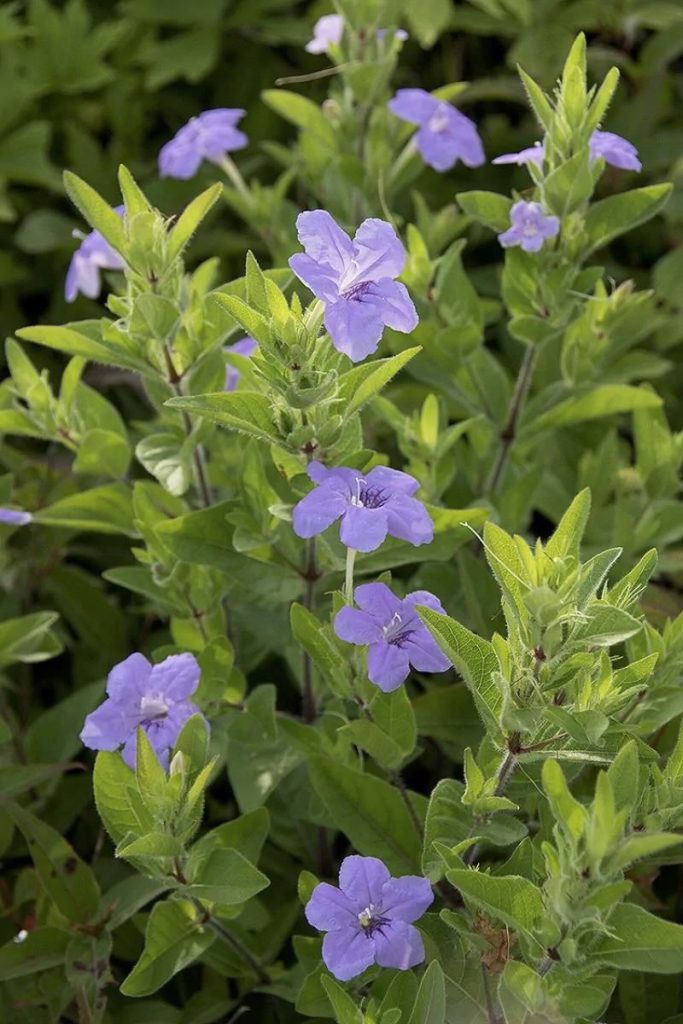
 Neil: Prairie petunia, wild petunia, Ruellia humilis [above].
Neil: Prairie petunia, wild petunia, Ruellia humilis [above].
Margaret: Wild petunia, O.Okay.
Neil: Humilis: low-growing, humble, low-growing. It’s a truly gorgeous plant with solely a violet flower. And it has a single faucet root, after which it merely spreads out. It sends out these branches alongside the ground of the soil. It doesn’t get better than a pair toes tall, so it’s one different truly good groundcover-ish plant. It doesn’t creep and kind a ground cowl identical to the pussytoes, the place it actually creeps by rhizomes or the wild strawberry [Fragaria virginiana] is one different good one, which creeps by rhizomes and may develop in very troublesome soils, too, very dry soils. And the Ruellia will be tolerant of scorching, dry circumstances. So these are literally good alternatives if you would like some low-growing vegetation, significantly in sturdy, scorching situations.
Margaret: Correctly, I will embrace some hyperlinks to among the many educational stuff in your website online, on account of as you said initially, education’s been a really important part of working with a product that people didn’t truly, and nonetheless don’t completely, find out about, and are merely learning about. I always research a lot from you, Neil, even after I’m not at your personal dwelling and in addition you’re not setting your entrance backyard on hearth to terrify me [laughter].
Neil: Correctly, it’s been a while. Margaret. Subsequent spring you’ll want to come, and we’ll do an anniversary prairie hearth.
Margaret: O.Okay. Additional trauma [laughter]. Correctly, thanks rather a lot. Thanks for making time at current.
Neil: It’s my pleasure, Margaret.
Margaret: Pull some further invasives, I’m going to go do the similar. O.Okay.
Neil: All correct. It’s been nice. Thanks rather a lot.
(All photos from Prairie Nursery, used with permission.)
enter to win the prairie vegetation data
I’LL BUY A COPY of “The Gardener’s Info to Prairie Crops,” by Neil Diboll and Hilary Cox, for one lucky reader. All it is necessary to do to enter is reply this question inside the suggestions subject beneath:
Have you ever ever added any native vegetation to your panorama in latest instances? Inform us (and inform us the place you yard).
No reply, or feeling shy? Merely say one factor like “rely me in” and I will, nonetheless a reply is even greater. I’ll select a random winner after entries shut at midnight Tuesday, June 11, 2024. Good luck to all.
(Disclosure: As an Amazon Affiliate I earn from qualifying purchases.)
want the podcast mannequin of the current?
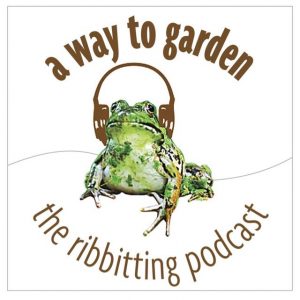
 MY WEEKLY public-radio current, rated a “top-5 yard podcast” by “The Guardian” newspaper inside the UK, began its fifteenth yr in March 2024. It’s produced at Robin Hood Radio, the smallest NPR station inside the nation. Concentrate domestically inside the Hudson Valley (NY)-Berkshires (MA)-Litchfield Hills (CT) Mondays at 8:30 AM Jap, rerun at 8:30 Saturdays. Or play the June 3, 2024 current using the participant near the very best of this transcript. It’s possible you’ll subscribe to all future editions on iTunes/Apple Podcasts or Spotify (and browse my archive of podcasts proper right here).
MY WEEKLY public-radio current, rated a “top-5 yard podcast” by “The Guardian” newspaper inside the UK, began its fifteenth yr in March 2024. It’s produced at Robin Hood Radio, the smallest NPR station inside the nation. Concentrate domestically inside the Hudson Valley (NY)-Berkshires (MA)-Litchfield Hills (CT) Mondays at 8:30 AM Jap, rerun at 8:30 Saturdays. Or play the June 3, 2024 current using the participant near the very best of this transcript. It’s possible you’ll subscribe to all future editions on iTunes/Apple Podcasts or Spotify (and browse my archive of podcasts proper right here).
[ad_2]
Provide hyperlink


